How would it be if people of all nations spoke but one language? If the world had a universal tongue so that all people, regardless of their mother tongues, their cultures, and their religions, could easily and readily communicate? And what if it took very little effort to learn this language? A code where all language borders dissolve, and the world is without misunderstanding: a true lingua franca, no less.
This dream is not a new one. As Umberto Eco for instance has eloquently shown in his book “The Search for the Perfect Language”, the romantic notion of a universal language has been around for millennia, and it was highly popular in Europe throughout Renaissance and then Enlightenment. In the book under review, “The Elusive Case of Lingua Franca”, Joanna Nolan investigates one of the most long-lived legends of a language understood by all: the (particular) Lingua Franca of the Mediterranean. Let us call it LF.
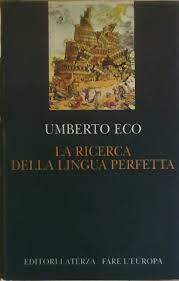
There is indeed ample evidence that such a code existed in the Mediterranean area from the 15th to the 19th centuries. In travel documents, in literature and song, and finally, in scholarly reports, we find the data that shows that a language apparently belonging to none and all allowed Christians, Muslims and Jews, peoples of many stands and nations coming together around the Mediterranean Sea, to rapidly communicate with each other. It was a simple code with a vocabulary based largely on Italian and other Romance languages, but it incorporated some Arabic and Turkish words as well – a language that everyone meeting in the Mediterranean littorals and at sea could understand and make themselves understood with, as legend would have it. The challenge is to uncover just how much truth there is to that legend.
But how to unveil a dead, oral language? What traces could it possibly have left, before tape recorders and voice memos? The question of documenting LF has occupied many a scholar ever since 1909, when the father of creolistics (the study of pidgin and creole languages), Hugo Schuchardt, wrote the first seminal article about the Lingua Franca (LF), setting the basic path to LF description. A rather vast collection of (short) texts comprising a classic corpus of LF documents has thus been compiled, refined and expanded upon since the turn of the 20th century.
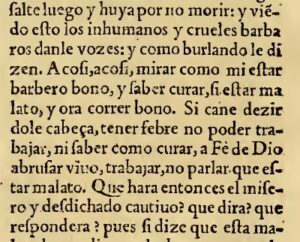
What we have, thanks to Schuchardt’s research and those that followed, is a series of snippets in letters, travelogues, and, importantly, works of drama, spread over vast amounts of time and space: for over 5 centuries, and throughout the entire Mediterranean area, poets, playwrights, missionaries, slaves, consuls – all attest to that peculiar language that was understood by those frequenting the Mediterranean sea and its littorals.
Study has churned over this corpus for over a century – without clear results about what the language was truly like. This is so because we cannot interpret these samples of conversation at face value, nor bundle them up for easy comparison over time or space. We need to delve deeper into the texts on an individual basis, to evaluate their relevance from the inside-out, or from behind-the scenes of what has been printed. This is just what Nolan does.
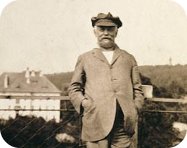
She tackles the problem of incomparability in one of the best possible ways: she examines the texts, primarily those of British writers, in their own right. She thus proceeds to take us on a thoroughly enjoyable journey through the texts, and along with it through a multicultural Algiers of the 18th and 19th centuries, offering an ecolinguistic study that examines the contents of the texts themselves, and the contexts from which the authors wrote them – emulating, as she acknowledges, work by others such as Carlota Mallette.
Nolan is clearly very engaged in the corpus, and it is a joy to read about the behind-the scenes info on the protagonists. To the person familiar with the workings of the canonical corpus, this is precious excitement. She does not just extract bare linguistic data, but fills us in on sociohistorical and ethnographic details. For instance, we find out more about the background to a certain Juan mentioned in the texts of one Elizabeth Broughton (1839), wife to an English diplomat stationed in Algiers, who wrote in her journal: “A Sicilian (slave to a Jew) has been recommended to us by Madame Farara, and has today entered our service, to receive instructions from Juan, whom he will replace as head cook.” (Broughton 1839: 49)
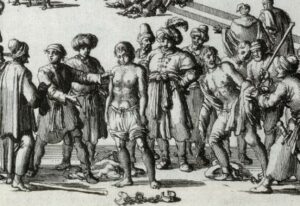
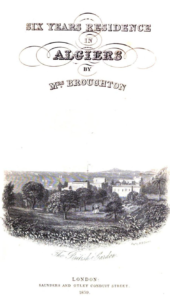
Nolan fills in: “The ‘ Juan’ referred to was Italian, while Madame Farara’s personal history is emblematic of the complex interweaving of nationality and religion in Algerine society. She was originally of British parents, born in Minorca and orphaned at a young age. Her future husband was an Algerine merchant, though unusually a Christian who had been captured from the island of Tabarca (off the coast of Tunis) by an Algerian corsair and enslaved together with his brother. Both had been fortunate to have come into the service of the Dey and subsequently to have been liberated. On a mercantile visit to Mahon, the capital of Minorca, Signor Farara fell in love with the young English woman who then renounced her Protestant faith in favour of Catholicism (Broughton1839: 13–14).” (Nolan p.15)
I personally find this background information thrilling. To me, it reads like an exquisite entertainment magazine: who?, where?, what?, and to the expert, that kind of looking glass examination is exactly what isneeded to form a valid picture of language use. This is not just spellbinding to the connoisseur, but exactly what knowledge webs and networks are made up. I laude Nolan’s depth of familiarity with the sources. It is a massive undertaking to know the corpus this well, and attempt to expand upon it, too. However, who else is in her captivated audience? What readers are targeted?

Nolan is clearly not a creolist, nor does she seem to target a general linguistics audience. Her short and few explanations of grammatical aspects in LF are accessible to a broader general audience, though she also doesn’t seem to otherwise address an uninitiated readership. She seems, unfortunately, to work in somewhat of a void.
And this may be the heart of the matter: LF scholars, all too frequently, turn out to be loners. For over a century, individual scholars have published pieces about LF, producing over and over again their personalised overview of the sources as first proposed by Schuchardt (1909), interpreting the textual evidence for the oral language. Despite many a good head working on the topic, seldom have these heads been put together. The researcher is easily exhausted once the tour of the corpus has been completed.
Nolan seems to be yet another loner, navigating her way through the corpus of a language that was once a uniting force across linguistic and religious borders. Regrettable irony! Unfortunately, her disengagement with current work do make it hard to contribute to LF on a theoretical level. In fact, she does not engage with much of the previous field of LF study – there are countless works, most of which go unnoticed in her references. Despite this concern, I do sympathise with Nolan. It is easy to believe that the corpus has become one’s own, when one has spent hours, days, months in the archives alone with them. It seems she fell in love, and lost sight of all else. That is enchanting in itself.
But do we get any closer in gaining an insight into the matter of LF? Yes, certainly, we get to know Algiers, the place where this almost universal language was used. And was the language a structured thing? Or was it rather primarily an idea, based on the retelling of an enchanting myth? We do not know. As Nolan makes clear in her study, LF remains elusive. Her telling of the story of texts of the oral language is certainly one of the more engaging ones yet. Nolan’s conclusion is that myth, too, has its own reality – and that is probably the best conclusion one can hope to arrive at. (cf Selbach 2004).

Joanna Nolan. 2020. The Elusive case of Lingua Franca. Fact and Fiction. London etc.: Palgrave Macmillan. Pp. 106. Hardback € 51,99, e-book € 42,79. [to order electronically, see https://www.palgrave.com/gp/book/9783030364557]
Rachel Selbach has published several articles and books on the Lingua Franca and language contact. Currently she is preparing a book about the Lingua Franca.








1 thought on “How does Lingua Franca induce loneliness? Thoughts upon reading Nolan’s 2020 “The Elusive Case of Lingua Franca””